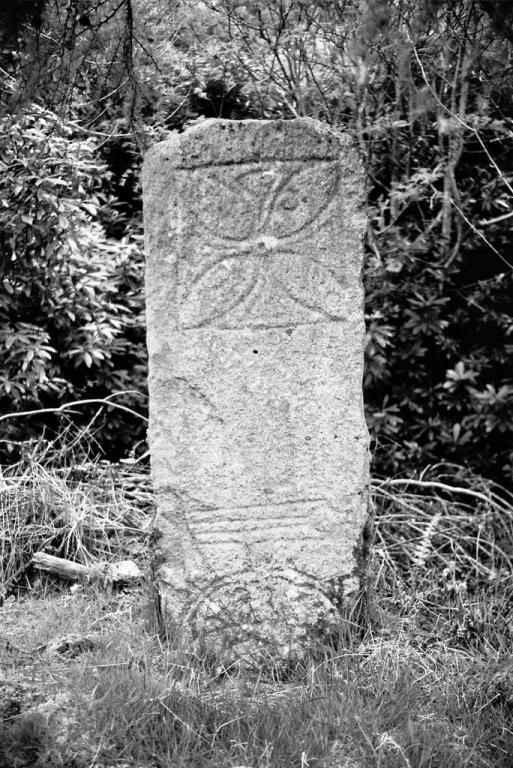
The Raasay Pictish Stone
By Caitlin Jackson
These objects can connect us to our most distant past... A continuity informed by these communities who once occupied the same landscapes, who fished the same rivers and walked the same hills, but assimilated and evolved over the course of a millenia.
The Spirit of the Highlands to me is one of continuity.
The Raasay Pictish Stone is a large piece of unworked stone, with three symbols engraved onto one side. It is believed to have been carved circa. 650-700 AD, by the Pictish people of the Highland region. The Stone was discovered in 1800 James Macleod of Raasay near the harbour at Clachan and is currently held at Raasay House.
The word Pict was coined by the Romans in reference to the communities who lived North of Hadrian's Wall. These people were not just warriors, objects such as this stone demonstrate their deeply rooted artistic tradition. This is also reflected in the named Pict meaning 'painted'. There are very few surviving records of the Picts and most that have been preserved offer differing explanations, dates, and locations. The stories and culture of the Pictish people remain an enigma.
 Image provided by Am Baile/The Highland Council
Image provided by Am Baile/The Highland Council
The Raasay Pictish Stone
What this stone provides us then is a crucial insight into the people that once occupied this land, through their art. It is rare for Pictish stones to be found in the Western Isles and while the majority of Pictish symbols have yet to be deciphered, this stone is also unusual in that it marked with a Chi-Rho cross. This is believed to be one of the earliest Christian symbols. The Christianisation of the Pictish kingdom was a gradual one that took centuries of assimilation between cultures to take place. There is little left in documentation of the Pictish people but their art, through stone carvings and surviving jewellery, give insight into a developed and complicated society which may not have been held together through shared belief, dress, or even language but that managed to integrate and embrace their commonalities to survive.
These objects can connect us to our most distant past and are essential in understanding the spirit of the highlands as it exists today. A continuity informed by these communities who once occupied the same landscapes, who fished the same rivers and walked the same hills, but assimilated and evolved over the course of a millennia.
We Want to Hear From You!
Share your stories of archaeological objects which you feel represent the Spirit of the Highlands and Islands
Stories are at the heart of what we do as a project and we are always looking to learn more about what the Highlands and Islands means to people who live, work, and visit here.
Objects from the history of the Highlands and Islands are all vessels for stories from past eras gone by. The stories within the carvings of the Raasay Pictish Stone are no exception, and provide a unique snapshot of the people of Raasay in the Pictish period. We would love to know, what objects from history do you feel represents the Spirit of the Highlands and Islands? Tell us more below, we can't wait to hear from you!
Click here to share your story through our online story portal